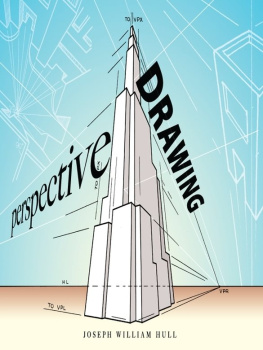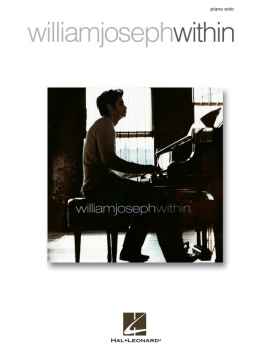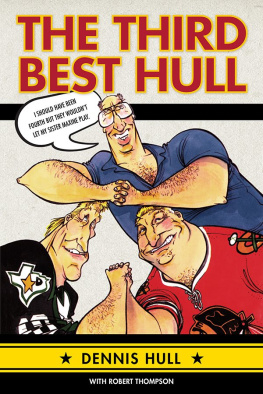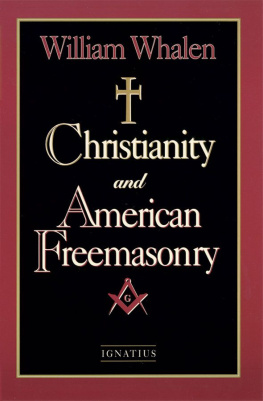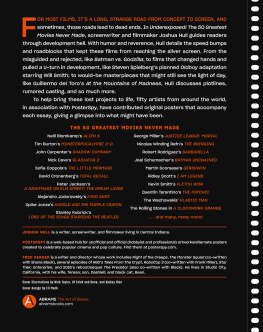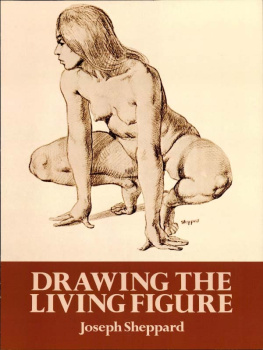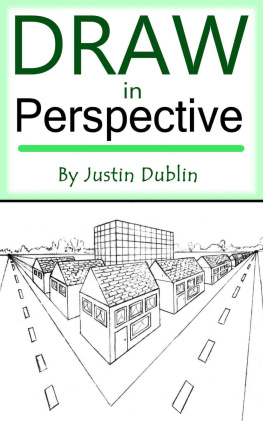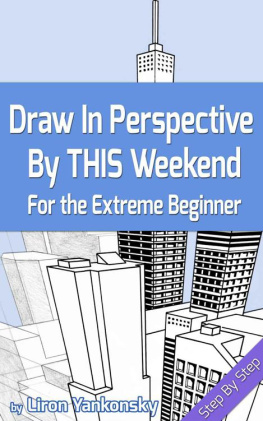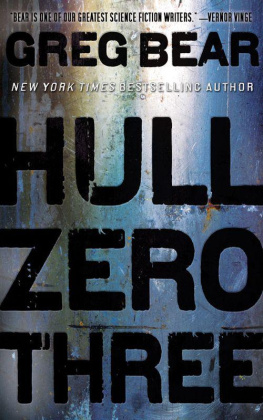Joseph William Hull - Perspective Drawing
Here you can read online Joseph William Hull - Perspective Drawing full text of the book (entire story) in english for free. Download pdf and epub, get meaning, cover and reviews about this ebook. year: 2012, publisher: Dover Publications, genre: Home and family. Description of the work, (preface) as well as reviews are available. Best literature library LitArk.com created for fans of good reading and offers a wide selection of genres:
Romance novel
Science fiction
Adventure
Detective
Science
History
Home and family
Prose
Art
Politics
Computer
Non-fiction
Religion
Business
Children
Humor
Choose a favorite category and find really read worthwhile books. Enjoy immersion in the world of imagination, feel the emotions of the characters or learn something new for yourself, make an fascinating discovery.
- Book:Perspective Drawing
- Author:
- Publisher:Dover Publications
- Genre:
- Year:2012
- Rating:5 / 5
- Favourites:Add to favourites
- Your mark:
- 100
- 1
- 2
- 3
- 4
- 5
Perspective Drawing: summary, description and annotation
We offer to read an annotation, description, summary or preface (depends on what the author of the book "Perspective Drawing" wrote himself). If you haven't found the necessary information about the book — write in the comments, we will try to find it.
Perspective Drawing — read online for free the complete book (whole text) full work
Below is the text of the book, divided by pages. System saving the place of the last page read, allows you to conveniently read the book "Perspective Drawing" online for free, without having to search again every time where you left off. Put a bookmark, and you can go to the page where you finished reading at any time.
Font size:
Interval:
Bookmark:
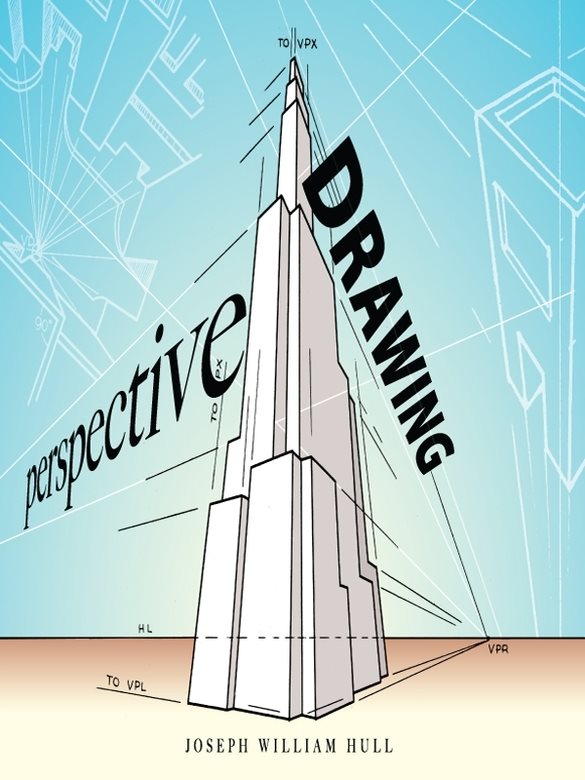
Art Institute of Chicago. The First Century of Printmaking. Compiled by Elizabeth Mongan and Carl O. Schniewind. Chicago: Lakeside Press, 1941.
Clark, Arthur B. Perspective. Stanford, Calif.: Stanford University Press, 1936.
De Tolnay, Charles. History and Technique of Old Master Drawings, a Handbook. New York: H. Bittner and Co., 1943.
Dodgson, Campbell. Modern Drawings. New York: Studio Publications, Inc., 1933.
French, Thomas E. Engineering Drawing. New York: McGraw-Hill Co., 1941.
Giesecke, Frederick E., Alva Mitchell, and Henry C. Spencer. Technical Drawing. New York: Macmillan Co., 1940.
Guptill, A. L. Sketching and Rendering in Pencil. New York: Reinhold Publishing Corp., 1944. (Reprinted as Drawing and Sketching in Pencil by Dover Publications, Inc., Mineola, N. Y., 2007.)
Havinden, Ashley. Line Drawing for Reproduction. New York: Studio Publications, Inc., 1942.
Holme, Bryan, and Thomas Forman, eds. Master Drawing. New York and London: The Studio Publications, Inc., 1943.
Medworthy, Frank. Perspective. New York: Charles Scribners Sons, 1937.
Miller, H. W. Descriptive Geometry. New York: J. Wiley and Sons, 1941.
Pope, Arthur. Introduction to the Language of Drawing and Painting. Cambridge, Mass.: Harvard University Press, 1939.
Ridgway, John L. Scientific Illustration. Stanford, Calif.: Stanford University Press, 1938.
The University Prints. Newton, Mass.
To achieve an intelligent, enterprising synthesis in drawing, the student must thoroughly understand perspective. Nevertheless, it is not enough merely to grasp the science of perspective intellectually; practical experience in the freehand aspects of perspective drawing is essential to a satisfying expression in this area of artistic endeavor.
The present manual deals only with the solid effect of objects in space. Less concrete, or abstract, drawing has been treated by many competent writers elsewhere, and the student of drawing who has a special interest in that type of creative work is counseled to investigate its possibilities.
It is a well-known but unfortunate truth that most people are pitifully unobserving. Indifference to the value of critical observation, coupled with the tendency to represent objects in terms of what is known about them rather than in terms of what is actually observed, forms one of the prime barriers to good representational drawing.
The word representational, for our purpose, means the truthful, graphic recording of the three-dimensional aspects of an object as it appears in light to an observer who is interested in developing his power of observation.
In order to draw well, one must possess a definite understanding of what he is about to state graphically, and also a well-developed skill in the use of the tools involved, a skill that will enable him to express what he wishes to say vigorously, delicately or elegantly, or with brevityin any case, eloquently. Remember, then, that a good drawing, of the kind in which we are interested, requires more than skill in using certain equipment; it becomes, vitally, a matter of learning really to see, to observe. Educators tell us that, in all probability, more may be learned through the eyes than through the ears.
The pencil, simple as it is, is one of the most responsive and most versatile of the artists tools. In the hands of a competent artist it can produce the finished drawing, whether that be a sketch of the utmost brevity or a rendered drawing in full-scale dark and light modeling. Let us begin to understand this potentiality by learning forms of pencil expression.
The pencil maybe trimmed in many ways; and, according to the special way in which it is trimmed, its point can produce a certain variety of lines. Thus, at will, the artist may have thin or thick lines, hard or soft and broken ones, firm, or semitransparent, or opaque, or textured linesall of which are valid expressions of the pencil (see p. 15).
Use your ingenuity and imagination; discover for yourself the numerous other means of preparing pencil points.
Again, there are many ways of holding the pencil. One is likely to think of the pencil as nothing more than a writing instrument; on the contrary, the pencil held in different ways can produce lines, two-dimensional forms, or masses of varying natures. To explore the possibilities of the pencil is an absorbing experience.
Before the student begins an actual drawing he should practice limbering-up exercises. Learn to draw long, straight lines not less than fifteen inches in various directions: left to right, right to left, vertical, horizontal, and oblique. Relax the wrist, and, holding your pencil almost parallel to the paper, place the side of the point on a starting place. Then look at another point relatively far from it, one with which you wish to connect it, and gently but firmly direct your pencil toward the more distant point. Do not look at the pencil or the mark; look at the point of arrival.
Next, try a similar exercise with long, curved lines, guiding the line through points marked off on the way. Always let your eye be a jump ahead of your pencil. Try using your intuitive processes, changing the direction part way along; after moving the pencil for some distance in one direction, reverse the curve, sometimes with a sharp, pointed break, sometimes with a curved change. Then repeat the whole series of exercises, practicing lines strictly parallel with one anotherentirely freehand, of course.
Now develop the curved line into an ellipse of, say, three inches in length along its major axis (see discussion, p. 111). Shadow-draw first, that is, go through the motions without drawing; then, at an intuitive urge to draw, lower the pencil while moving, until it touches the paper lightly. Try again and again to complete the ellipse with an invisible join.
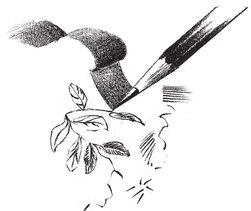
. Pointed pencil; examples of use of the point, and also, of the use of the whole side of the lead
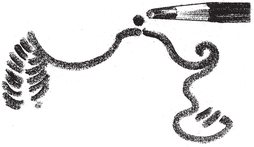
. Truncated point; method of making a broad streak, with well-rounded beginning and ending
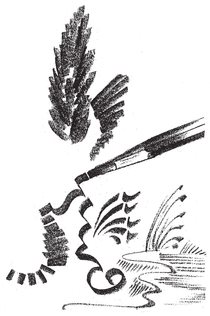
. Chisel point; examples of use of corner, and of use of entire chisel edge (line begins and ends with a straight edge)
You will find plenty of illustrative material for comparative study in this field in your local library, museum, or art galleries; frequent and regular visits to these sources will bring rewards. Compare the styles of line by artists from various geographical areas.

Font size:
Interval:
Bookmark:
Similar books «Perspective Drawing»
Look at similar books to Perspective Drawing. We have selected literature similar in name and meaning in the hope of providing readers with more options to find new, interesting, not yet read works.
Discussion, reviews of the book Perspective Drawing and just readers' own opinions. Leave your comments, write what you think about the work, its meaning or the main characters. Specify what exactly you liked and what you didn't like, and why you think so.

